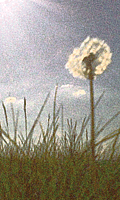


NEWS:
11 shows for December including a new DJ - plus 2025 Festive 50 arriving from Christmas day.
Artist Info
|
Traffic  Image from Discogs  Traffic was an English rock band formed in Birmingham in April 1967 by Steve Winwood, Dave Mason, Jim Capaldi (died in 2005), and Chris Wood (died in 1983), after Winwood left The Spencer Davis Group. From their beginning, in 1967, they were quite popular in their native England, though success elsewhere was slower in coming. Their first three albums combined psychedelic rock and soul with elements of British folk music, giving them a unique, groundbreaking sound. Their most popular single was Dear Mr. Fantasy, from the album of the same name. Traffic was an English rock band formed in Birmingham in April 1967 by Steve Winwood, Dave Mason, Jim Capaldi (died in 2005), and Chris Wood (died in 1983), after Winwood left The Spencer Davis Group. From their beginning, in 1967, they were quite popular in their native England, though success elsewhere was slower in coming. Their first three albums combined psychedelic rock and soul with elements of British folk music, giving them a unique, groundbreaking sound. Their most popular single was Dear Mr. Fantasy, from the album of the same name. Traffic reached a much wider audience when, on the dissolution of Cream, two thirds of that band, one third being Eric Clapton, joined Steve Winwood (during a temporary Traffic disbanding) to form Blind Faith, which also included future Traffic member and sometime Family man, Ric Grech. In 1970, after the disbanding of Blind Faith, Winwood set about recording a solo album. After Chris Wood and Jim Capaldi became involved, the decision was taken to release this album (eventually what would become John Barleycorn Must Die) under the Traffic name, despite the absence of Dave Mason. Around 1971, Mason left for good (having been in and out of the band from the beginning), and the the band experienced a variety of personnel changes. The resulting band added some jazzy elements to their style, pioneering the jazz-rock genre, and the compositions tended to stretch out over longer lengths. With their albums The Low Spark of High Heeled Boys (1971) and Shootout at the Fantasy Factory (1973) their popularity in the US grew. After two more albums, personnel problems resulted in the band calling it quits (but for a brief reunion in 1994 without Wood, who had died in 1983). Winwood, Mason, Capaldi, and Wood all pursued solo careers, with Winwood garnering the most success. There are/were other artists with the same name: 2) Traffic is a pop-rock band from Estonia. 3) Traffic is an American rapper from Los Angeles. 2) The Estonian pop-rock band Traffic came together in 2006 and consists of five members: Silver Laas - Vocals, Stig Rästa - Guitars, Robert Vaigla - Guitars, Tõnis Kivisild - Bass, Ivo Priilinn - Drums. The band has been to Eesti Laul several times, trying to get to the semi-finals of Eurovision. In 2009 they ended up in the 2nd place, in 2014 in the 3rd place. Traffic has two studio albums. Some of their most popular singles are "Für Elise", "See Päev", "Kesköödisko", "Päevast Päeva", "Elekter" and "Meie laul". 3) Darrail Cail, better known as Traffic, is a rapper from Los Angeles, CA. He first received major mainstream attention in the music industry when he was featured on “Tookie Knows II” from ScHoolboy Q’s fourth LP Blank Face. He is one of Schoolboy’s childhood friends. 4) The Spectes, a band that eventually became Status Quo discovered psychedelia in 1967 and named themselves Traffic, but were soon forced to change it to Traffic Jam to avoid confusion with Steve Winwood's Traffic, following an argument over who had registered the name first. Shortly after Rick Parfitt's recruitment, in August 1967, the band officially became The Status Quo. Read more on Last.fm. User-contributed text is available under the Creative Commons By-SA License; additional terms may apply. Artist biography from last.fm Some other places to look for information: last.fm Discogs MusicBrainz |
